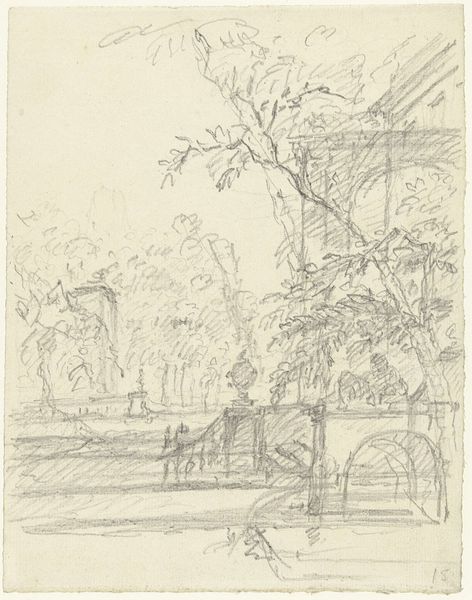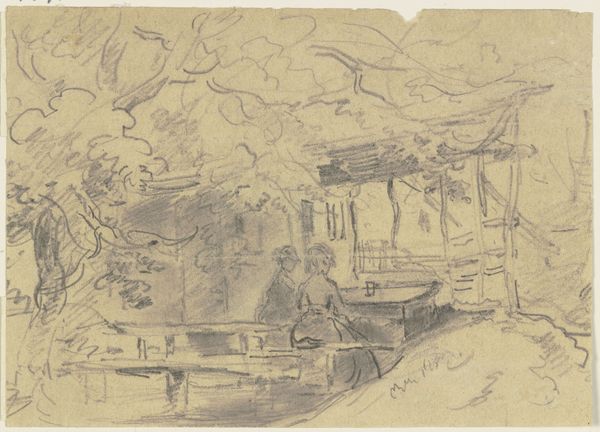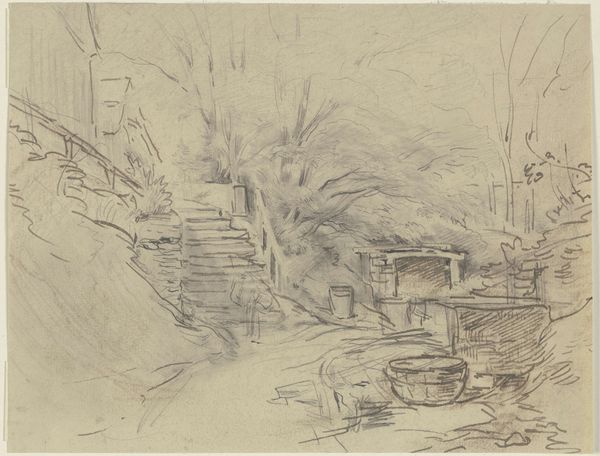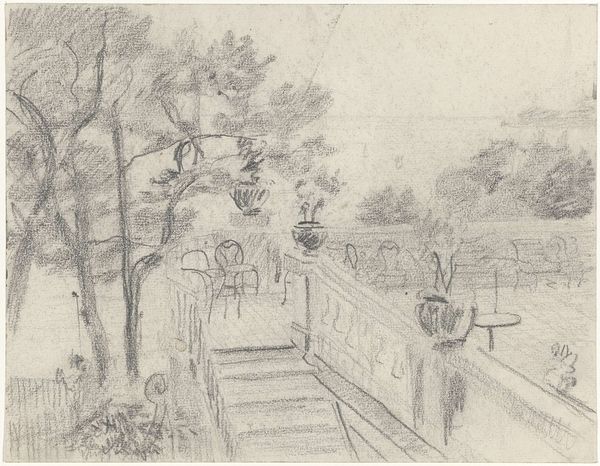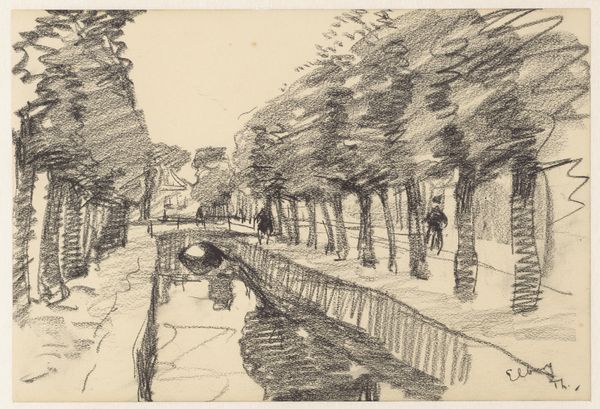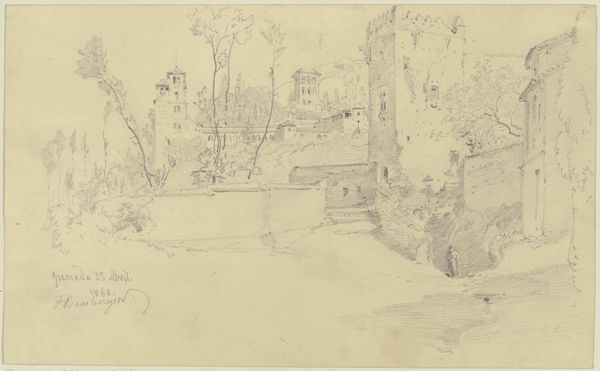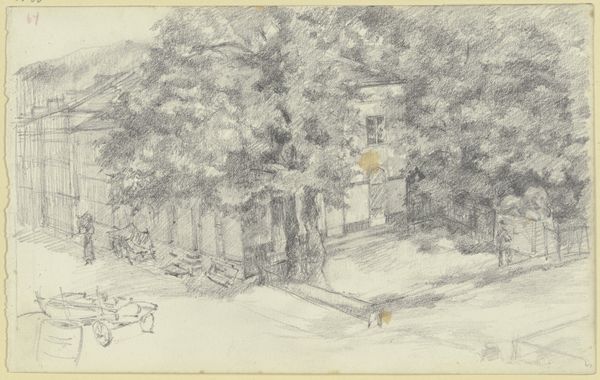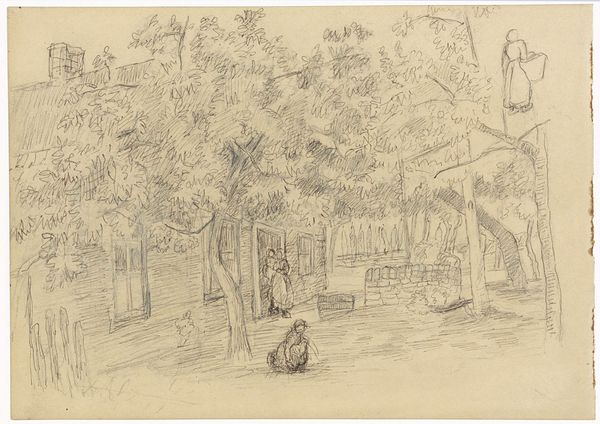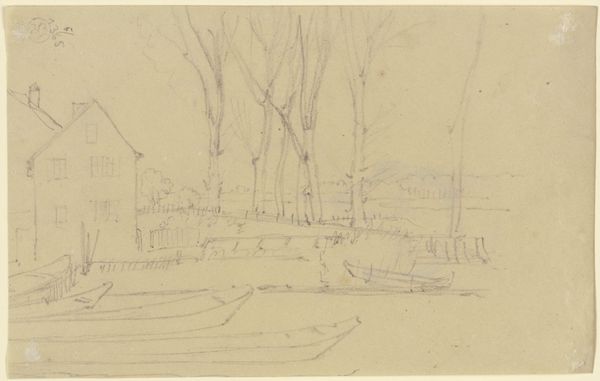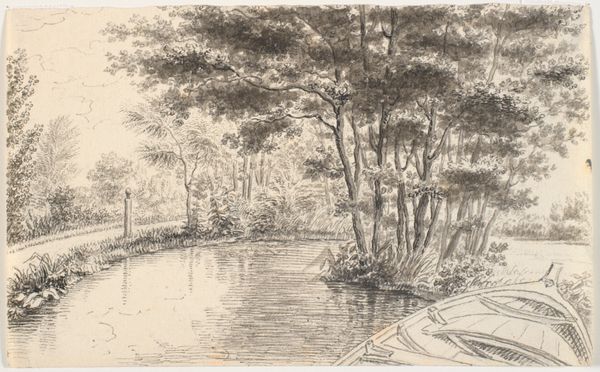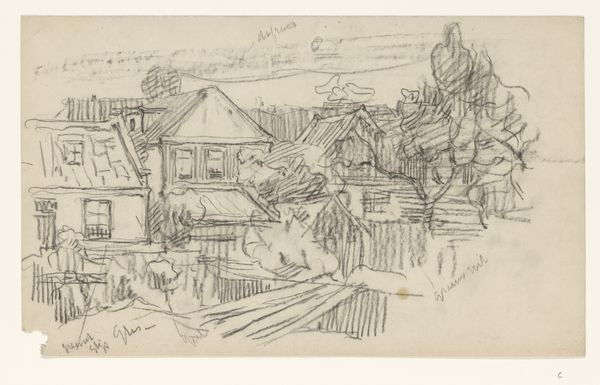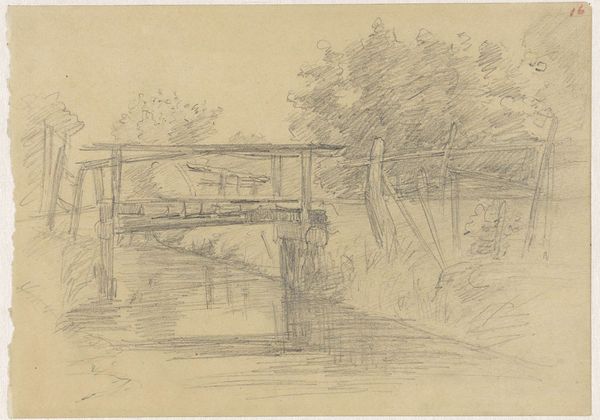
Copyright: Public Domain: Artvee
Editor: So, this is "Haarlem," a pencil drawing by Max Liebermann from 1904. It really captures a kind of fleeting, almost ghostly image of a canal. What strikes me is how minimal it is—almost unfinished, but somehow very complete. What do you see in this piece? Curator: You know, I love that "ghostly" is the word you used! It reminds me of half-remembered vacations or dreams you try to catch as they fade. Look at how Liebermann uses these quick, nervous lines— it’s as though he’s sketching a memory rather than a solid, concrete place. He’s after something more ephemeral. Notice how light and shadow define the space. Does it make you want to step right into the scene or feel distanced from it? Editor: It's funny you say that; I feel both! Like I'm on the bank, but also just observing. Did Impressionists often focus on capturing those kind of subjective moments, over accuracy? Curator: Absolutely. Accuracy was for cameras, wasn't it? Artists like Liebermann aimed to capture a feeling, an impression. They were interested in the effects of light, movement, and atmosphere—the transient aspects of reality that a photograph couldn’t capture. It’s about experiencing Haarlem rather than documenting it. Do you get a sense of that artist presence in it? Editor: I do! I mean, it feels more intimate knowing it was a quick impression from life and he left his traces on paper. Makes me want to visit the canals. Curator: Doesn't it? I always imagine him standing there, charcoal in hand, trying to trap that very light. It's beautiful that art can bring us so vividly into a moment that passed over a century ago. We all seek meaning, whether with pencil and paper, and paint or through words! Editor: Absolutely! It's inspiring how Liebermann used simple tools to freeze that specific time, and the mood of Haarlem. Thanks!
Comments
No comments
Be the first to comment and join the conversation on the ultimate creative platform.

